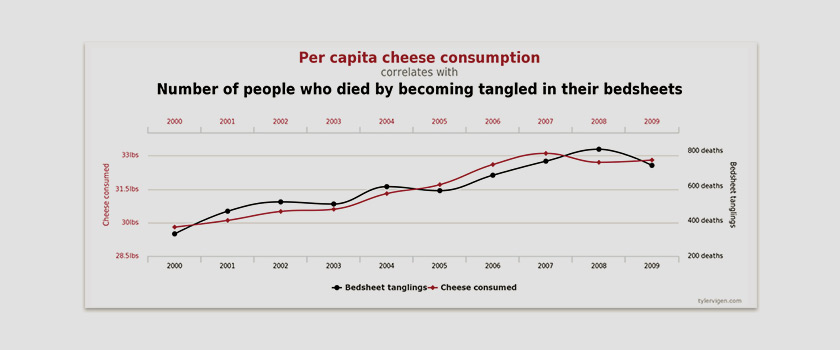With the rise of digital superpowers like Facebook and Google, Big Data is THE buzzword of the moment, with businesses small and large jumping on the data bandwagon, investing time and resource into the gathering and maintenance of their data.
As a self confessed data nerd working in online marketing, our Performance Director, Jenny says: ‘“Marketing without data is like driving with your eyes closed” (Dan Zarella) is one of my favourite quotes’.
But what happens when too much data starts to cloud our decisions? What if our subjectivity is making us shape the data incorrectly? Here, Jenny sorts the ins and outs, the necessary from the potentially unnecessary of big data.

Time wasting and data overload
In a perfect world, you report from your analytics platform, and the answers to your performance problems are spelled out for you instantly in the numbers. Realistically however, most data requires cleaning and a certain amount of manipulation in order to pull out any kind of insight, which can be time consuming.
Data analysts have to answer and report to a number of stakeholders. From marketing managers to finance directors, sales teams to board members, all can request different stats, reports, analysis…the list goes on!
This means that we often spend hours, even days, number crunching. Graphs are built, various types of data are combined, all in pursuit of that next ‘eureka’ moment. Without a clear idea of the objectives and the value to be gained from these efforts, it’s easy to get lost in too many spreadsheets and graphs, wasting precious time, misusing information and allowing inaccuracies to slip through.

Mismatched data
Many businesses use a plethora of tools for tracking performance, including analytics platforms, booking systems, CRM systems, call tracking, etc.… The data across these tools won’t always match (for various reasons), but as long as the difference is relatively small (<5%), this isn’t something to waste too much energy on. Constantly questioning, comparing results and trying to fix data discrepancies is a sure fire way to waste time that is much better spent optimising your business activities.

Correlation Vs Causation
Put simply, the correlation of two different sets of data does not always mean that causation is at work. Just take the Russian folklore example cited in Stephen Pinker’s book, The Blank Slate, in which a Tsar discovers that, within his empire, the province that has the highest rate of disease also has the highest number of resident doctors. As a result, he has all the doctors killed. Ridiculous, right?
According to Tyler Vigen and his website Spurious Correlations, there are endless totally unrelated sets of data that, when pulled together, create highly amusing correlations. The following being one of my favourites:

On a more serious note, business decisions are often made based on factors that are believed to have influence on performance, solely because of correlation. Basing your analysis on one factor because it aligns most noticeably with improved performance could be misleading and costly.
It is crucial to question what else may be responsible. Was there any other marketing activity running simultaneously? Were there any outside influences, such as holidays or world events worth noting? Were any onsite changes made that could have improved usability, and therefore website performance? Don’t settle for what appears the most obvious; make sure you have asked all the right questions of the data, instead of making assumptions that could lead you and your business down a route of inaccuracy.

HOW TO EFFECTIVELY APPROACH YOUR DATA
KISS – Keep It Simple, Stupid
The KISS principle, originally devised by the US Navy for their aircraft engineers, states that most systems work best if they are kept simple. This is often transcribed in marketing as “keep it simple and straightforward”. The key is to understand what your main objectives are and which factors you will use in your analysis. Keep to the task at hand to ensure your reports are simple and easy to interpret.

Ask the right questions
Ultimately, always ask yourself what information is the the most valuable in terms of the decision making process, and look at this only. Much time is wasted on reports that clog up email inboxes, are rarely looked at and from which no actions are ever taken. Focus on what is important and try to establish some consistency between departments, to avoid duplication of data. Finally, follow up on your reporting to verify that the data is actually being used!
If you would like to find out more about how you can measure and improve the performance of your marketing and take actionable insights from your data, get in touch today.






